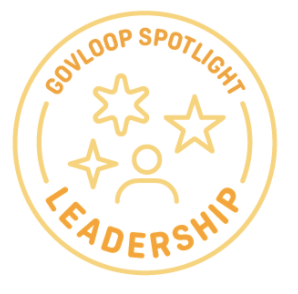 “How do you measure integrity?” A senior executive who leads employee experience in a federal High Impact Service Provider agency recently asked me this.
“How do you measure integrity?” A senior executive who leads employee experience in a federal High Impact Service Provider agency recently asked me this.
I love this question, and I’ll share my answer here. But first, a couple of other questions may naturally come to mind.
What do we mean by integrity within the context of workplace culture? Integrity at work and within an organization’s culture means practicing your core values and listening for feedback around how these values are demonstrated throughout the agency in real time. Leaders set examples on how to model integrity through behavior and facilitation of work experiences. Harvard Business leaders speak to integrity as critical leadership competencies, too.
Is it even possible to measure an organization’s integrity? Yes. Because integrity is a complex experience felt (or not felt) on a regular basis, it is possible to translate this to a business measurement.
Why should measuring integrity be a priority? The answer comes down to employee engagement and retention. Employees want to work in organizations with integrity where they believe their employers care about them.
The following Great Resignation data points call our attention to various points of integrity challenges across the work ecosystem:
- 40% of people end up leaving due to burnout.
- 20% of employees who feel an integrity disconnect end up leaving because they don’t believe their contributions and ideas are valued.
- 34% of employees end up leaving due to organizational changes.
Change is a natural part of work, but how employers handle change with integrity — or not — drives employees to stay or leave.
Integrity is connected to the degree to which employees trust their direct supervisors. And it correlates with job satisfaction, job performance and exercising discretionary effort. Studies of leadership in 62 cultures show that “trustworthy,” “just” and “honest” are universally desired attributes of integrity. That means as a leader, a big part of showing employees that you care is simply doing what you say you’ll do. While that may sound easier said than done, trust in leadership may be the most vital determinant of employee outcomes tied to how customers experience services.
That’s why understanding and measuring employee experience through the lens of integrity in your work culture is powerful. Here are two effective strategies for getting started.
Approach 1: Engage your workforce, frontlines to C-suite, to define what integrity looks like in your organizational experience
Understanding what integrity means to your organization, especially during times of rapid change, is the first step.
Crawl: Crowdsource examples from across your organization to understand how your community currently defines “integrity.” Listen across various channels: focus groups, meetings, and structured and unstructured pulse polls. Remember: From an employee perspective, integrity shows up in work’s daily experience, which often centers around communication, relationships and equitable interactions.
Walk: As you begin collecting employee engagement and experience data, you will start to detect themes and insights. As part of your analysis, highlight the top concepts or values and engage critical stakeholders again for more refinement. Identify “best practices” in how top values show up as behaviors in daily interactions.
Run: Roll out strategic employee pulses at keystone employee experiences. Ask questions that evaluate what the employee population defines as “integrity” behaviors. Train all employees, from frontline employees to C-suite executives, to learn and practice new value-based behaviors.
Approach 2: If you already have organizational values and a vision, explore how these show up through key employee experiences
Once you have a foundation of employee experience data, parse insights and understand what different people’s roles in an organization can do to improve the organization’s integrity.
Crawl: If you already have organizational values and a vision, it’s essential to check in with your workforce to ensure they believe this is practiced with accountability. Consider getting an organizational “health check” by pulsing employees about their perceptions.
Walk: Once you have a fresh understanding of where your employees are in real time, you can now explore how you might improve the integrity of practicing these values.
For example, the insights you gather from the employee pulse experience may reveal that your organization’s customer experience strategy feels “too scattered” and communication is not focused or intentional. You may find that a significant number of employees are telling you that they don’t know what business priorities to focus on and feel a sense of chaos and inability to do meaningful work, resulting in malaise due to the lack of clear communication.
Run: Once you’ve crowdsourced some fresh solutions from employees, you can ask more experiential questions that roll up to your value, vision and overarching organizational integrity levels on a regular basis.
For example, it is best for leaders to focus on the enablement section of an overarching employee experience as it is the bulk of their career experience. If employees vote on a core employee experience around change — a new “tool” that requires a massive system migration — break the change down into a journey with phases. To help gain buy-in for changes across your organization, tie employee enablement to mission-critical goals or key performance indicators (KPIs). For example: If the Food and Drug Administration seeks to improve illegal drug and substance regulation, enablement must be prioritized, and the employee’s experience of improving this workflow is the first step.
Final Thoughts
No matter what approach you take, ask your employees for their input at various stages along the way. Always be mindful of communicating the results you uncover and the specific actions you will take — even if they are small steps. While silence kills integrity, you also don’t want to overpromise and underdeliver. Employee trust is gained in drops, and lost by the bucket. Managing integrity in employee experiences begins with honest and frequent communication and engagement.
Nina Bianchi focuses on transformative culture experiences. She served as Chief of People and Culture at the Food and Drug Administration (FDA) and with the General Services Administration’s (GSA) IT Modernization Centers of Excellence (COE). As a White House Presidential Innovation Fellow (PIF) with the Biden Cancer Moonshot at the National Cancer Institute (NCI), she led collaborative work experiences to drive personalized patient experiences. Before serving in government, Nina led a social innovation consulting firm with a network of high-impact public-private partnerships. Her teams designed transformation solutions for city governments across the globe, philanthropy, nonprofits, Fortune 500 companies and institutions like the Massachusetts Institute of Technology (MIT).
Interested in becoming a Featured Contributor? Email topics you’re interested in covering for GovLoop to featuredcontributors@govloop.com. And to read more from our summer/fall 2021 Cohort, here is a full list of every Featured Contributor during this cohort and a link to their stories.






Leave a Reply
You must be logged in to post a comment.